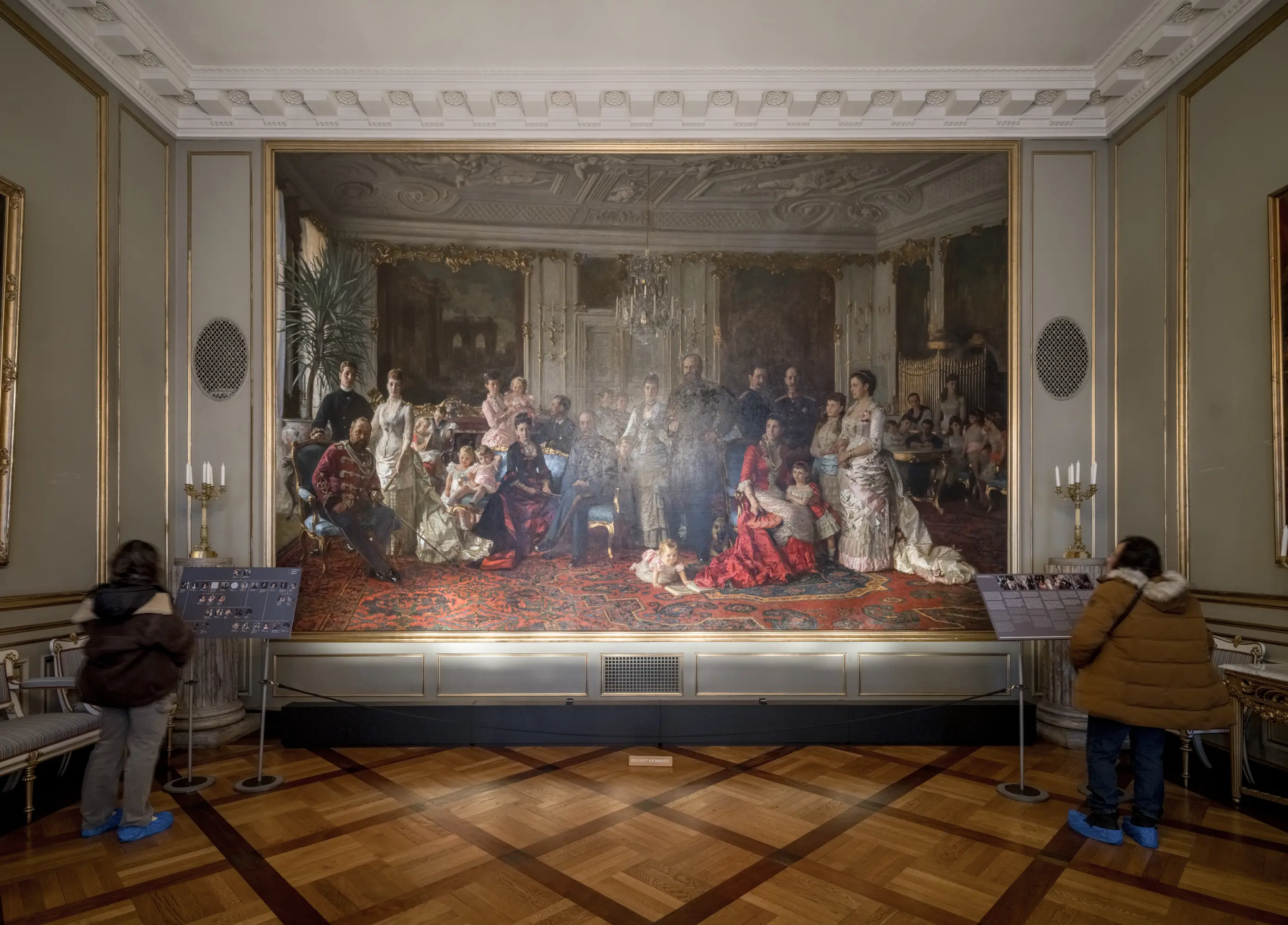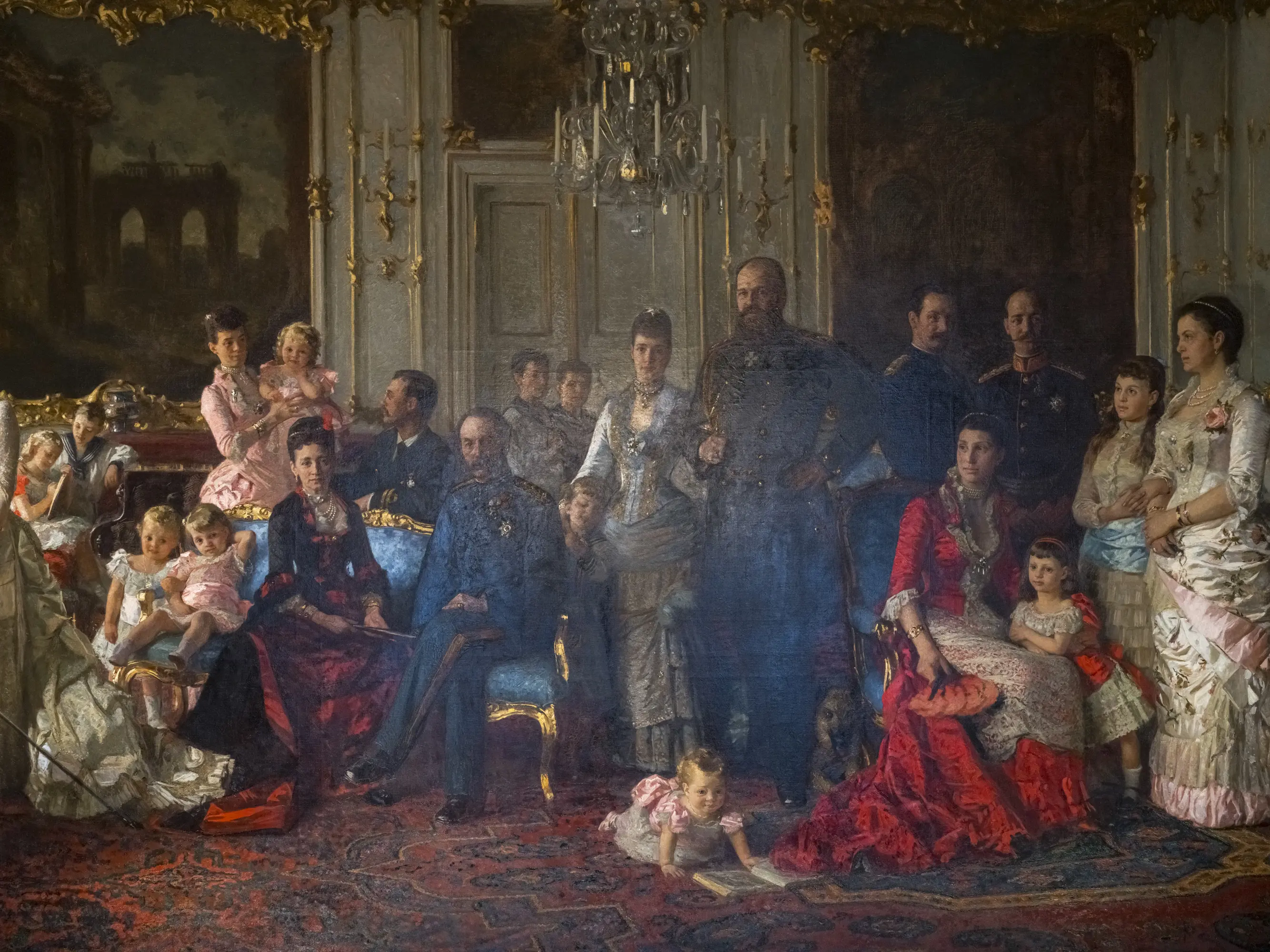The Fredensborg Room
The Fredensborg Room is named after the 5 x 7-metre painting created by Lauritz Tuxen in 1883–1886. The painting is a unique representation of the so-called Fredensborg Days, when Queen Louise and Christian IX gathered their family at Fredensborg Palace for the summer.

In the Fredensborg Room, you are welcomed by royals from all over Europe in Lauritz Tuxen's 'Fredensborg Painting'.
The Fredensborg Painting
The Fredensborg Room is named after the 5 x 7-metre painting created by Lauritz Tuxen in 1883–1886. The painting is a unique representation of the so-called Fredensborg Days, when Queen Louise and Christian IX gathered their family at Fredensborg Palace for the summer.
The royal Glücksborg family is lined up in the Garden Room at Fredensborg Palace, dressed in their Sunday best. The many children crawl on the floor, hang around the neck of an adult or sit together in the corners of the room.
Europe's parents-in-law
The painting shows the result of Queen Louise's diligent efforts to facilitate significant marriages for her children. So significant, in fact, that the royal Glücksborg family became the most powerful princely family in Europe.
This is evident in the painting, which features former Danish princesses, such as Empress Dagmar of Russia and Crown Princess (later Queen) Alexandra of the United Kingdom, and former princes, such as George I of Greece. The marriages produced 39 grandchildren and numerous titles for the large family and also earned the Royal Couple the nickname 'Europe's parents-in-law'.
Wood from Mars
One interesting detail in the Fredensborg Room is that the floor is made of wood from Mars. The Mars warship was built in 1784 and was involved in the Battle of Copenhagen, in 1801. The ship was sunk by the British during the bombardment of Copenhagen in 1807. In 1921, what remained of the Mars was recovered by the protection vessel Absalon. The oak, which had turned into bog oak, was processed at the Naval Dockyard and used for flooring in the Fredensborg Room.

